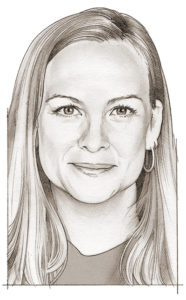
Jeanette Varberg is one of Denmark’s leading historians with expertise on Viking warfare and Bronze Age history. An archaeologist and scholar, she has written numerous books and articles about Danish history and Viking raids. Varberg’s book Viking, published in Denmark in 2019, recast the history of Viking battles and global expeditions with a focus on interpreting artifacts as well as written sources. A curator at the National Museum of Denmark, she is a driving force behind a new exhibition entitled “The Raid,” which opened in June 2021 and will run for three years. Varberg’s research continues to shed light on Vikings at war.
How did you first get interested in Viking history?
When you live in Denmark, in southern Scandinavia, and are interested in our past, there is no way around the Vikings. Theirs is one of the most fascinating periods of our history. They lived right where I live today. In that respect, the answer is that I’ve been interested in Vikings since my childhood.
How long have you been researching Viking warfare?
Since 2014, when I wrote my first book, Past Battlefields. It described the changing nature of warfare from the Stone Age until the Viking Age. Warfare in the Viking Age was a special part of my research focus.
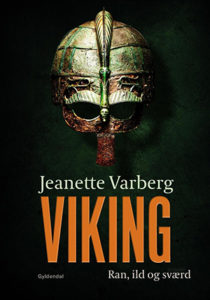 To chronicle the Vikings’ raiding history must have seemed an impossible task.
To chronicle the Vikings’ raiding history must have seemed an impossible task.
It was an impossible task! I missed having a book that was not thematized about the Vikings but rather told me the chronological story of how they became powerful raiders, sailors and conquerors of kingdoms and new lands. Since I focus on prehistoric Europe, I also wanted to give the impression that the history of the Vikings is not without connection to early history. That is why I started my book about the Vikings with the Fall of Rome, the rise of Christianity and the Migration Period.
In other words, I wrote the book I missed about the Vikings. I wrote an overview of their travels—both raids and adventures across the North Atlantic and to all parts of the known and unknown world. I wanted to give them a solid front seat in the grand history of early medieval Europe.
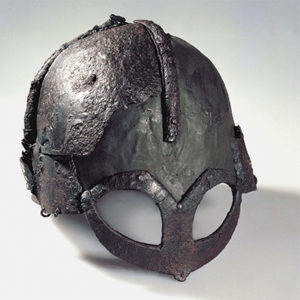
What are the most common misconceptions people have about the Vikings?
The most common misconception about the Vikings is that they wore helmets with horns! They didn’t.
Another misconception is that all Scandinavians were warriors. First and foremost, the Vikings were formidable sailors, able to cross the open sea in well-built, streamlined ships. Next, they were fierce and skilled warriors. Last but not least, they were hardworking farmers always on the lookout for new lands to put under their plows.
Have you learned anything surprising about Viking military customs?
I was surprised when I realized Scandinavian warriors fought like pirates who went for soft targets: administrative centers in the cities; granaries; rich, remote and unprotected monasteries; and men and women from distinguished families who could be held for ransom. Enriching themselves on gold, silver and slaves, the Vikings also had no reservations about hiring themselves out as mercenaries and were not shy about changing sides if the other paid better.
‘Enriching themselves on gold, silver and slaves, the Vikings also had no reservations about hiring themselves out as mercenaries and were not shy about changing sides if the other paid better’
In the eyes of the Christian commanders who opposed them, they were disloyal heathens, and they were certainly guided by a very different code of honor than the Christians. The Vikings had no qualms about attacking during the holidays, such as Christmas and Easter, when Christians normally abstained from warfare and engaged in celebrations.
That is how it began. But toward the end of the Viking Age the Scandinavian kingdoms themselves became Christian. They then had armies that held their own against the powers of Europe—their power culminating when Danish Viking king Canute the Great ascended to the English throne. That was perhaps their biggest achievement.
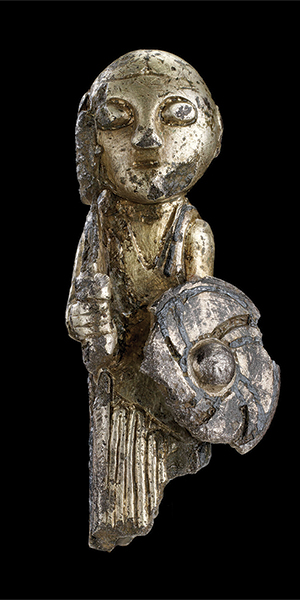
What are some of the most fascinating Viking artifacts you have worked with?
That is a hard question for an archaeologist. I think the big stories in small objects are what fascinate me the most—for example, the small figurine from Haarby, Funen, Denmark. It is a small warrior woman with riding dress, shield and sword. She is very beautiful and is probably one of the Valkyries, servants of Odin—one of the principal gods in Norse mythology. The Valkyries accompanied warriors killed on the battlefield to Valhalla.
How has your research changed perceptions about the Vikings?
I hope to make evident that in just a few hundred years—from 750 to 1050—Scandinavia went from a region of non-Christian, unstable petty kingdoms to one of the most powerful Christian kingdoms. During that period the Scandinavian kingdoms underwent tremendous development and established a trading system that made Scandinavia a hub for trade between Asia, Russia, western Europe and as far as Canada.
The Vikings built cities and colonies in the British Isles, in the Frankish kingdoms, along Russian rivers, on the North Atlantic Isles, in Greenland and in Canada. With ships, swords, battlefield skills, trading savvy and a strong belief that fortune favors the brave, they left their mark throughout the known world. My book tries to cover it all and keep the red thread of the Viking tale through the centuries, and hopefully it will give a more nuanced understanding of the age.
How did your book inspire “The Raid” exhibit at the National Museum of Denmark?
The narrative in the exhibition follows the book in how it is chronologically built and sectioned by the three main centuries of the Viking Age. It begins with an overview of the time before the Viking Age, called “Between Jesus, Muhammad and Odin.” It ends with the reign of Canute the Great and the colonies in Greenland. It is not sectioned according to themes, unlike other exhibitions about the Vikings.
In part of the exhibition we follow the Vikings on their biggest adventure—the voyage to the Mediterranean in 859–861. That’s a chapter in my book.
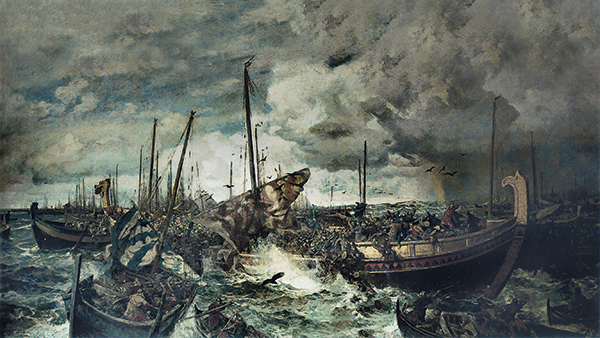
What was your role in creating the new exhibit?
I was the exhibition director and had the final call and responsibility in all processes from choosing artifacts and writing the texts to making a film, book and documentaries, while leading a fantastic and skilled museum team.
What do you hope people will learn from the exhibit?
Visitors should learn something not just by looking and observing. They are invited to acquire new knowledge through play—and by participating as active co-creators of history.
The museum experience concludes in a sea battle in an immersive room where the visiting explorer is “killed” and travels to one of the Vikings’ imagined kingdoms of the dead—the realm of Ran, goddess of the drowned.
I want visitors to reflect on the consequences of pillaging and raiding: If you succeed, you get a great name and silver, but you can also die trying. MH
This article was published in the January 2022 issue of Military History.





